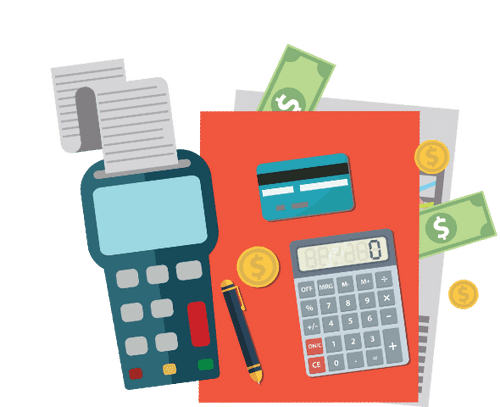Purchasing a home while exciting can also be stressful and overwhelming, especially as a first-time homebuyer. Let’s not forget that you’ve probably read daunting articles and heard rumblings from family members that make you want to run from the process altogether. But you’d be surprised at the amount of false information going around when it comes to mortgages. For your sake (and sanity), we’ve debunked five of the most common mortgage myths so you can apply with peace of mind.
Myth 1: Your only upfront cost is a down payment
Even though down payments are a significant upfront cost when buying a home, it’s not the only expense you need to be prepared for. You’ll also want to consider your closing costs. This is a set of fees added to the purchase price of your home and typically ranges from 1.5% to 4%. To get an idea of what your closing costs may be, check out our Closing Cost Calculator.
Myth 2: To qualify for a mortgage, you must be debt-free
Although debt has an impact on your ability to get approved for a mortgage, you can still qualify if you have debt. When determining how much you’re eligible to borrow, a lender will consider what is called a debt-to-income ratio. To calculate it, you need to add up all your monthly debts, divide it by your gross monthly income and multiply it by 100.
Here’s an example:
Marie pays $1,700 per month for her mortgage, $200 for her car loan, $100 for her student loan and $300 to cover her credit card debt. Her total monthly debt expenses are $2,300 ($1,700 + $200 + $100 + $300 = $2,300). Her gross monthly income is $6,250, which means her debt-to-income ratio is 36.8%.
Myth 3: You need a 20% down payment
Yes, providing your lender with a 20% down payment has its benefits – whether it’s equity ownership, the possibility of lower interest rates and no CMHC insurance – but it’s in no way required. In fact, Canadians are able to make a down payment as low as 5% and most do.
If you’re looking for financial assistance with your down payment, consider the following options:
- Home Equity Line of Credit (HELOC)
- First-Time Home Buyers Incentive
- Home Buyers’ Plan
- Gifted Funds
Myth 4: You need perfect credit to get a mortgage
False. You don't need perfect credit to purchase a home and there are many lenders out there that can help you lock in a mortgage based on your unique circumstances. For example, let’s say your credit score isn’t as high as you’d like it to be. While you might have a hard time securing a mortgage with a Prime A lender, there may be a B lender or a private lender who is willing to give you a mortgage but at a higher interest rate. Another option is getting a co-signer or if you can, increasing your down payment.
If your credit is on the lower end or what lenders consider below average, learn more about your options here.
Myth 5: Being pre-qualified for a mortgage isn’t the same as a pre-approval
Although the terms sound similar, pre-qualification and pre-approval are different. Pre-qualification comes before getting pre-approved, but your approval doesn’t depend on it. Pre-qualifying enables lenders to discuss your income, debt and other financial information to estimate your potential monthly mortgage payments. A pre-approval is when a lender secures a rate and mortgage product to a borrower for 120 days. This commitment is beneficial because rates often fluctuate, while the amount agreed upon between you and the lender will stay the same. The pre-approval process allows you to narrow your home search and sets realistic expectations on what you can afford. At Homewise, we’ve brought this entire process online with a 5-minute application.
If you’re thinking about applying for a mortgage, we hope we’ve set the record straight and taken away any apprehension you’ve been feeling. Our team at Homewise is here to assist every home buyer with useful resources and tools to make the mortgage process easier and more enjoyable.







